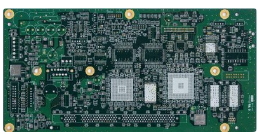The introduction of lead-free smt patch assembly has always been a challenge for the first assembly, because it will face more challenges when PCB processing and rework are required. Performing PCBA repairs in a lead-free environment will have higher cost, quality details, time and repeatability issues-but due to lead-free requirements, all these issues need to be paid attention to. Because the lead-free process requires:
1. Train operators to conduct lead-free assembly, maintenance and inspection, and evaluate time and cost
2. Lead-free solder materials are all more expensive than the traditional ones, such as lead-free wires, welding rods, and core solders.
3. The processing temperature (about 30-35 degree Celsius) of lead-free assembly requires higher accuracy and precision.

4. The lead-free process also requires the research and planning of the smt processing plant to establish the correct PCBA rework process.
PCBA rework
The best practice of PCB assembly rework, first of all, requires targeted training and guidance of technical personnel and development of configuration files for the characteristics of the lead-free process. The standard for rework is defined, whether standard solder or lead-free solder is required, the process starts the same-the required steps are:
1. Define and execute accurate thermal profile
2. The failed component must be removed
3. Clean up all rust or solder residues on site and prepare for new components
4. Replace the components with new solder and flux and reflow
5. Rework is thoroughly inspected
In a lead-free environment, accurate and reliable rework is more difficult because the PCBA and the components closest to the parts requiring repair must withstand multiple high temperature cycles. In order to protect the stability of the circuit board, the preheating temperature should be set not higher than the glass transition temperature of the PCB material.
The subsequent steps involved in the rework process vary depending on whether there is a lead-free requirement. The difference between standard and lead-free brings many challenges that can only be solved by introducing new or changed processes, including stricter and more accurate thermal profiles and extremely high accuracy throughout the PCBA rework process. This will avoid many costly problems caused by different heat distributions.
Advantages of automatic smt processing production line
The importance of the smt process as a fully automated production line is well known. After all, it provides the efficiency and consistency required for high-volume PCBA manufacturing. The current market demand makes the importance of automated assembly more important than ever. Obviously, its importance comes from the high efficiency and quality it provides, which makes it easier to enter the market. Therefore, it can become an important source of competitive advantage. Other major advantages it provides include:
1. Low cost
Professional smt chip processing plants use circuit board assembly procedures before entering actual production. In turn, this reduces the possibility of errors and delays. It is also possible to correct any design errors during this period. Overall, this leads to a significant cost reduction.
PCBA manufacturing
2. Reduce the chance of error
The process of the printed circuit board assembly requires great attention to detail. This is especially true considering that circuit boards are getting smaller and smaller. Automated patch assembly significantly reduces the chance of error. This means you can get a reliable product and you don't have to face costly mistakes when you are ready to ship the final product.
3. Consistent quality
One of the major advantages provided by automated assembly is that you can ensure consistent quality. This is also one of the advantages of entering industrialized mass production.
Four, miniaturization
With miniaturization, it is usually impossible to manually assemble components, requiring an automated assembly process. In addition to these general advantages of automated assembly, PCB automated assembly also benefits in particular from the following facts:
1. Large components require automatic reflow soldering, because it is difficult to solder the pins manually, especially the pins hidden below.
2. QFP is very sensitive to coplanarity and is difficult to weld manually.
3. Small components such as PCB resistors and capacitors are difficult to solder manually.
4. For circuit boards with densely placed PCB components, the consistency of manual soldering is always a problem.